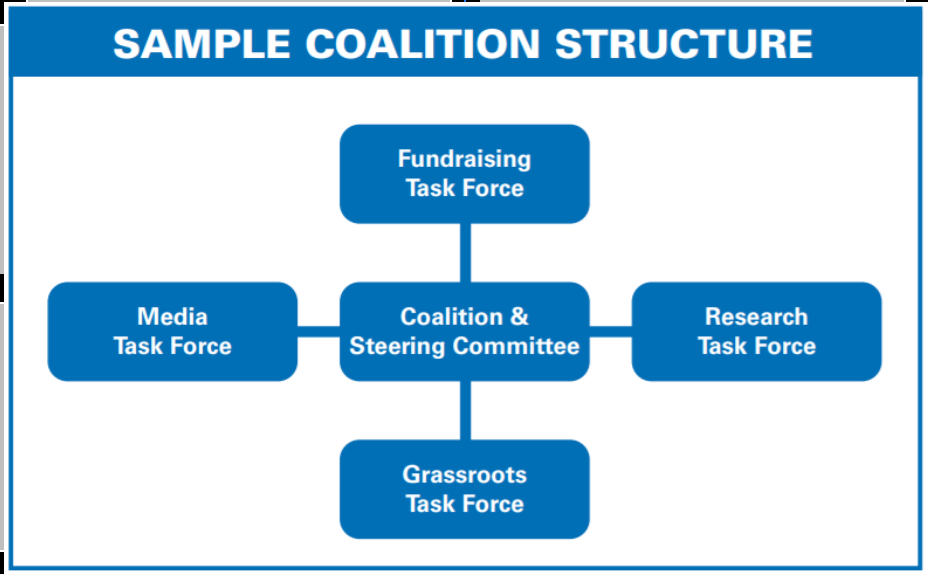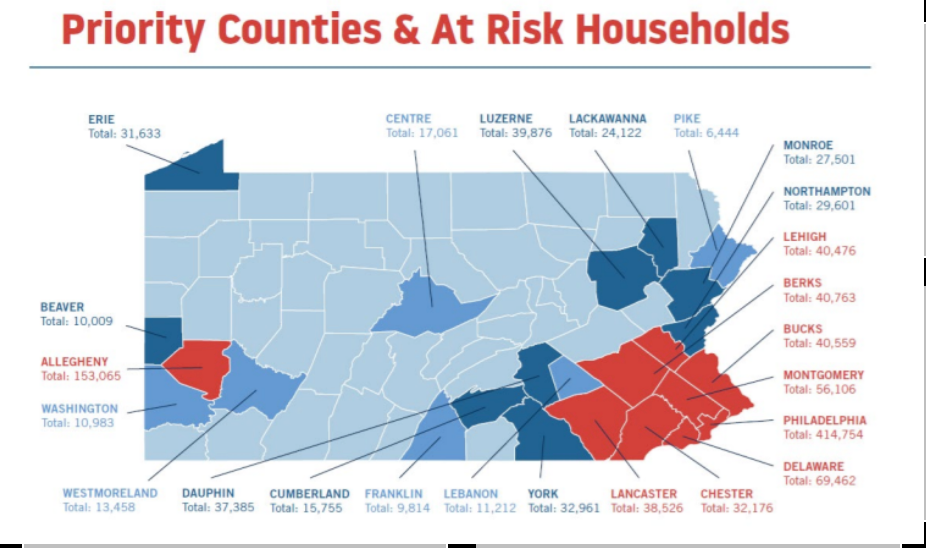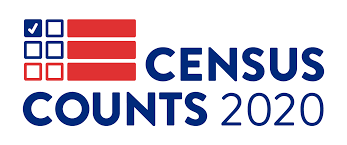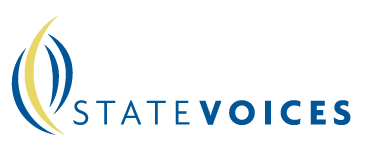Download the PDF
Click here.Five Important Best Practices for Any Get Out the Count Campaign
- Recruit trusted messengers. A get out the count (GOTC) campaign is a persuasion effort, designed to convince people to participate in the census and encourage others to do the same. That requires trusted messengers who are considered safe and credible by the people they are engaging. If you are mobilizing to encourage participation by members of a community that has been historically missed in the census, your messengers should come from that community. These messengers are essential to having the information you share heard and accepted, and they can help dispel fears or disinformation that might prevent a successful count.
- Utilize digital tools and tested messages. Utilize digital tools and tested messages to reach undercounted communities. The messaging and media outreach section of this toolkit includes broad and community-specific messaging research; the section on digital tools can help you make the most of social media and other online opportunities; and the section on field outreach can help you plan your grassroots outreach plans.
- Identify your targets. Use tools like the CUNY hard-to-count map to identify where households most at risk for being missed in the 2020 Census are located. Note that your targets will expand from existing get-out-the-vote (GOTV) or issue-based efforts. This toolkit can help you identify additional data sources for phone and canvass targeting. Census outreach is a great way to engage members of your community who might not normally receive any outreach—like a knock on their door—inviting them to participate in our democracy.
- Create an integration plan for GOTC with other civic participation activities. Get out the count (GOTC) outreach activities can be incorporated into other nonpartisan civic participation outreach, like voter registration activities. Stakeholders should be careful to educate community members on the different eligibility requirements for voting and census participation: the census invites everyone in the United States to participate, pursuant to the U.S. Constitution, while voting has stricter eligibility requirements, such as age and citizenship. Under no circumstances should census outreach efforts be combined with partisan GOTV outreach. However, it is important to note that many organizations will be planning separate efforts encouraging participation in the 2020 election; consider both census and electoral timelines in your planning. Please see the legal guidance section for guidance on the legal guidelines for this outreach and GOTC field guidance for additional best practices.
- Train the Trainers. Support your network by enhancing the number of census experts in your community. Do this by participating in “train the trainer” activities that are planned ahead of the 2020 Census. Many of the authors of this toolkit and other census hub organizations will be providing “train the trainer” programs. The purpose of these trainings is to pass along education and advocacy tools for census organizers, from grasstops to volunteers, so that everyone can help support the census. Find an event near you here.
Building a GOTC Plan
A GOTC plan for your state or community should include:
- Background:
- Basic information about the importance of the 2020 Census to your state or community (e.g., resources your community deserves, apportionment implications, racial ethnic groups that could be missed, communities missed in the 2010 census)
- Any relevant national and local context for the 2020 Census
- Audience Targets:
- Identify who you are trying to influence with your outreach plan.
- Include information about the specific hard-to-count (HTC) communities being targeted by your campaign
- Coalition:
- An overview of the coalition: Consider doing a power-mapping exercise. Are stakeholders reaching the defined audience? Are there gaps?
- Goals and strategic objectives for your GOTC plan:
- Try to build SMART (Specific, Measurable, Achievable, Relevant, and Timebound) goals into your plan.
- Build in time to review your goals and objectives as you move through the plan.
- Develop tactics for outreach during the 2020 Census.
- Plans for monitoring and measuring your GOTC efforts in real time:
The CUNY Hard-to-Count map will provide regular updates on self-response rates. For more information on how to track the census count in real time, see the Census Counts webinar: “How to Monitor the Count in Real Time” (Recording + slide deck).
Timeline
Stakeholders will need to adjust outreach strategies and tactics at different points during the 2020 Census. See the census milestones document for a full timeline. Below are some key milestones and suggested tactics by phase. Stakeholders should customize based on the needs for their community.
-
January through March—Education and Awareness:
- Census Bureau ad campaign goes live.
- Census Bureau begins enumeration in Remote Alaska in January 21.
- Stakeholders educate communities about the census and how they will be invited to respond (educational events, town halls, census awareness promotional content focusing on hard-to-count neighborhoods). Events will include a focus on encouraging eligible households to respond during the self-response period.
- Stakeholders deploy and educate communities about their GOTC plan (e.g., where census kiosks will be, how you are supporting communities, and what they can expect from you).
- Stakeholder groups will have “census weeks of action” for specific communities (calendar forthcoming).
-
Mid-March through April 30: Self-Response Operation: (*PEAK CENSUS OUTREACH EFFORTS*)
- Census Bureau ad campaign drives a “respond-to-the-census” message.
- Census Bureau mails or hand-delivers census materials to almost all households, which will have an opportunity to respond online, by telephone, or using a paper questionnaire. (See the operations section of this toolkit for more information.)
- April 1, 2020 is Census Day—a reference date for the enumeration.
- Census Bureau enumerates group living facilities and transitory locations.
- Stakeholder groups will be focusing on inviting hard-to-count neighborhoods and historically missed groups to self-respond.
- Stakeholder groups may be going door-to-door in your community.
- The Census Bureau’s ROAM map and the CUNY hard-to-count map will display daily self-response rates by census tract.
- Stakeholders may provide devices or internet access to support people filling out their census questionnaire.
-
Mid-May through July: Nonresponse Follow-Up (NRFU)/Census enumerators go door-to-door:
- Census Bureau ad campaign drives “reminder, return your form” message
- Census Bureau enumerators going door to door.
- The Census Counts campaign does not encourage stakeholder groups to canvass door-to-door during the NRFU phase, so as not to interfere with on-the-ground efforts of Census Bureau enumerators or create confusion among households.
- “Reminder” outreach to key hard-to-count neighborhoods.
- Census education about what enumerators look like and why they are going door-to-door.
Example of GOTC plan:
In Pennsylvania, the Keystone Counts coalition, which is focused on getting a complete count in the 2020 Census, is being staffed by the Pennsylvania Voice table, an existing network of service providers, membership, community, and grassroots organizations, and policy, advocacy, and legal partners. Here’s how their GOTC plan describes the stakes and identifies its specific HTC targets:
The Pennsylvania Voice partnership identified the 2020 Census count as a key priority because of the significant and far-reaching consequences the census would have for communities of color, immigrants, and other communities it serves—for an entire decade. In order to prioritize our outreach and engagement work across the Commonwealth, we looked at the areas of the state that experienced undercounting in the 2010 Census, along with demographic growth since 2010 in the at-risk populations of people of color, immigrants, and children under 18. Using Census Bureau data, we identified 24 priority counties across the Commonwealth that are most at risk of an undercount, and created tiers by severity of risk:
Some coalition partners will have more expertise and capacity to mobilize for different aspects of a field plan; those with more expertise and capacity can train others to organize or participate in different aspects of a field plan: event canvassing, door-knocking, relational organizing, phone-banking, mailers, and text-banking. Other coalition partners may be able to support social media, communications, and language assistance.
The Keystone Counts campaign has identified 1.2 million households least likely to respond to the census and is planning to reach these households through at least one of these methods of engagement.
In Language Support and Training
An estimated 25.9 million people, or nearly 1 in 12 U.S. residents, had limited English proficiency in 2015. Many hard-to-count communities face language access barriers that could discourage or complicate participation in the census. The Census Bureau is providing English and Spanish bilingual forms to a subset of households. In addition, full questionnaire assistance in 12 non-English languages is available online and by phone. The Census Bureau will provide resource guides and glossaries for 59 non-English languages. (See the Census Bureau’s language support plan for details on language availability.)
The Census Bureau language plan does not include all languages that may be spoken in the community you are trying to reach. That is why several advocacy organizations are translating census information into many of the languages not covered under the Census Bureau plan. (See AAJC/ NCAI…, etc.) Census Counts partners have already prepared census materials in multiple languages that you might be able to use. To learn more, visit the Asian Pacific American Labor Alliance website.
As much as possible, your organization should provide written, visual, and verbal materials in multiple languages that are appropriate for the needs of people in your community. If necessary, work with a translation service and review the materials with community members to ensure that the translated terminology aligns with local vernacular and avoids unfamiliar phrasing. Use plain language as much as possible, but avoid oversimplification that would flatten nuances from the original English materials.
How to organize an event
One way to raise awareness or build energy and enthusiasm for your campaign is to organize a town meeting, panel discussion, or more informal event like a block party that you can use to share information with people and sign them up to take part in other activities.
Tips for organizing an event:
- Know the Ground Rules: If you are going to hold an event in a public space, determine what kind of permits you might need, how far in advance you need to reserve space, and other requirements for setting up tables or a tent on public space.
- Be Accessible: Identify a location that is convenient for people you are trying to reach and is accessible for people with disabilities. Consider whether the location feels like neutral or common ground rather than being associated closely with one leader or group.
- Be Creative: Create engaging visuals, such as banners, signs, and recognizable T-shirts for your volunteers.
- Be Informative: Prepare fact sheets, flyers, palm cards, and postcards.
- Be Engaging: Offer candy, stickers, or other small giveaways to draw people to your table.
- Ask everyone who comes to your event to share their contact information (with appropriate privacy safeguards). Give everyone something simple to do before they leave the meeting, such as signing a petition, postcard, or pledge, or volunteering to distribute information.
- Budget: An event doesn’t have to cost a lot of money to produce, especially if you have access to rent-free space and equipment. But producing an event will take some resources. Plan for the cost of space, food, materials, promotion, sound system, staff time, and parking.
- Media and Communications: Consider inviting the media to cover your event by sending out a media advisory ahead of the event or a press release after the event.
For more tips on successful organizing, see the Leadership Conference Education Fund’s Grassroots Toolkit.
A coalition is a group of organizations that agree to work together toward a shared goal. Many states have active coalitions preparing and implementing plans to ensure a complete count. National and state organizations have joined efforts to create the States Count Action Network. This large coalition represents smaller state coalitions, organizations, and local complete count committees dedicated to ensuring their communities are counted in the 2020 Census.

Find active census GOTC coalitions in your state by clicking on the state by state map. The Census Bureau has created an online map of Complete Count Committees (CCC). If there’s not an active GOTC coalition or CCC in your community, organize one!
How to Organize a Coalition
Identify potential coalition partners by making a list of organizations whose missions are aligned with the goals of your campaign. When it comes to the census, think broadly, because every organization that is working to benefit your community or specific constituencies in your community has a lot at stake in ensuring an accurate count. GOTC coalitions can include agencies that provide direct services, school boards and teacher organizations, business groups, community foundations, and more.
Start by reaching out to people you know personally; once you’ve enlisted their support, ask them to suggest other participants. Approach potential partners with a short written description of the coalition’s goals and objectives.
Give people different ways to be involved; if they can’t serve on the steering committee, perhaps they can name a staff liaison to the campaign. If they can’t commit to long-term participation, maybe they can co-sponsor a single public event. Some organizations may have to follow a formal process before signing on. These are opportunities to make new allies and sharpen your ability to make a compelling case for your campaign.
Your coalition may need some structure to keep things moving forward. You may have a small steering committee or working group that can make decisions as needed. But be sure that all your partners understand the decision-making process and have an opportunity for input. You may want to have specific working groups or committees to take on specific assignments and tasks, such as media outreach or event organizing.
Potential Impact of Citizenship Question Controversy
The 2020 Census will not include a citizenship question. However, people in immigrant households and communities may have heard about the Trump administration’s attempts to include a question about citizenship and legal status on the 2020 Census at the last minute. That effort was opposed by members of the Census Counts coalition and other groups who believed that such a question, especially in a climate of hostility toward immigrants, could discourage participation.
In June 2019, the Supreme Court stopped the Secretary of Commerce (who oversees the Census Bureau) from moving forward with the citizenship question, finding that the administration’s justification for asking the question was not credible.
This was a major victory, but some advocates worry that the controversy has already harmed the credibility of the 2020 Census, particularly in Latino, Asian, and other immigrant communities. The NALEO Education Fund’s ¡Hágase Contar! (Make Yourself Count!) Campaign is operating a toll-free bilingual hotline 877-EL-CENSO (877-352-3676) as part of its national effort to overcome the effort to suppress the count of Latinos.



